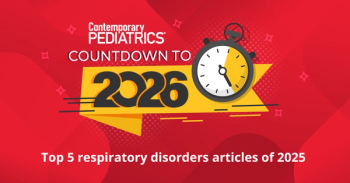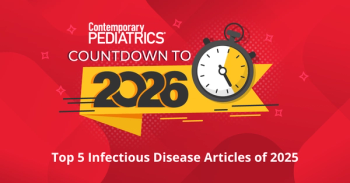
- Vol 35 No 06
- Volume 35
- Issue 6
12 more tips about allergies and oddities
Many parents and professionals have these misconceptions about allergies and other unusual findings.
1. Parents often worry about switching their breastfed baby to cow’s milk-based formula because they worry about lactose. This is not a concern, as breast milk contains lactose.
2. Similarly, Lactaid milk will not work for children with a true milk allergy. Allergies are to the protein in milk, not the sugar.
3. Breastmilk jaundice is not a contraindication to breastfeeding, nor is supplementation with water or formula needed, unless there is dehydration/excessive weight loss.
4. Spicy foods do not need to be avoided in children with gastroesophageal reflux, unless they are clearly causing problems.
5. Many (not all) allergists advise against exercise after allergy shots for at least 2 hours. I am not aware of any literature in support of this practice once the waiting period in the office, in case of an anaphylactic response, has passed.
6. As with asthma, it is very unusual to get hay fever in the first 2 years of life, and it’s almost unheard of in the first year, especially without a strong family history of allergies. If you are making such a diagnosis in a child this age, double-think it.
7. A scrape on the lower back over the spine is often from sitting on the edge of the pool, and then lowering oneself in.
8. Many circumcised boys present with a whitish discharge from the penile sulcus. This discharge is dead skin, like ear wax, because there is a small opening in the skin with a “tunnel” beneath it, and the dead skin can accumulate there. Although it is tempting to push the material out, as if you were squeezing toothpaste out a tube, this is not necessary. Leave it alone, and it will eventually close on its own.
9. I started pediatrics shortly after we learned not to manually “correct” phimosis in young boys. However, the analogous situation, labial adhesions in girls, was still widely treated with estrogen creams. This works, but the adhesions often recur, and I have not used it for over a decade now (I was a slow learner).
10. Ocular photoscreeners are great, but they often pick up astigmatism. This can be a normal finding, outgrown with age,1 and I do not refer younger children for this.
11. I had a teenager come to the office with the complaint that he was cyanotic, and indeed he was blue from the neck down. He was not dyspneic, and cyanosis does not present that way. Wiping his skin with an alcohol pad removed the blue dye that he had picked up from his new blanket, having slept nude and not showering for a few days.
12. I had another child, aged 5 years, who was cyanotic around the mouth. Examination showed purplish smooth discoloration, perioral but sparing the lips, again without dyspnea. History revealed that he had a hickey from applying a vacuum cleaner around his mouth.
References:
1. Abrahamsson M, Fabian G, Sjöstrand J. Changes in astigmatism between the ages of 1 and 4 years: a longitudinal study. Br J Ophthalmol. 1988;72(2):145-149.
Articles in this issue
over 7 years ago
Pediatric migraine: Diagnostic criteria and treatmentover 7 years ago
Anaphylaxis essentials for infantsover 7 years ago
Burnout: Pediatrician, heal thyselfover 7 years ago
Fever, headache, arthralgias, and rashover 7 years ago
How to bring oral health to primary careover 7 years ago
JUULING: What kids don’t know will hurt themover 7 years ago
Teenager with sudden diffuse dermatitisover 7 years ago
Poverty and lack of a car lead to failure to fill prescriptionsover 7 years ago
Antibiotics or antacids in infancy may increase risk of allergyNewsletter
Access practical, evidence-based guidance to support better care for our youngest patients. Join our email list for the latest clinical updates.




